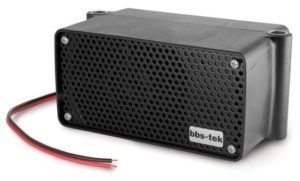The latest technology from Brigade can help you manage risk on site
The construction industry continues to thrive throughout the world, with the global market expected to grow in value by 85 per cent to 15.5 trillion US dollars by 2030. Yet while the industry flourishes, one of the biggest issues it faces is that of safety in the workplace where the number of injuries and fatalities caused by accidents on worksites continues to cause alarm.
In the UK, just over 2.73 million people are employed in construction sector jobs. According to the Health and Safety Executive, there were 196 fatalities in the construction industry in Great Britain in the five years to 2017. Of these, 10 per cent were struck by workers being struck by a moving vehicle. Statistics also showed that of the 5,055 non-fatal accidents during 2016/2017, 13 per cent were struck by moving objects.
Research shows that workers in the construction industry are at risk in a number of areas. These include:
- Collisions due to rear, front and side blind spots
- Collisions due to poor visibility, such as dust, fog, and working at night
- Site workers being struck by vehicles and mobile machines
- Ear defenders reducing site workers’ ability to hear clearly approaching vehicles
- Tonal back-up alarms being ignored by site workers
In the high-risk construction industry, organisations have a duty to safeguard their workers. Although many countries are required to comply with their own health and safety standards, organisations are increasingly choosing to invest in enhanced safety systems to protect their workers and keep their reputations intact.
 Technology Innovations
Technology Innovations
On construction sites, the need for safety is paramount, particularly as the slightest mistake can have devastating consequences. The latest innovations in technology mean many of these accidents can be prevented.
A range of safety systems are available to assist construction companies in keeping their staff safe. On-board camera systems can help to alert drivers to possible dangers, while reversing and warning alarms alert workers when a vehicle is manoeuvring near them.
Brigade’s reversing alarms harness high-spec broadband sound frequency, emitting a wide range of white sound frequencies. These enable workers to locate the direction of the sounds instantly. Rather than the old style ‘beep beep’, Brigade’s bbs-tek White Sound reversing alarms create a ‘ssh-ssh’ sound, which dissipates quickly. This means the alarm can only be heard in the danger zone, so there is more chance of alarm-weary workers paying attention. The broadband frequency also gives workers wearing ear protection devices a better chance of hearing the alarm.
Sensing Risk
Blind spots on large worksite vehicles and machinery can be particularly deadly. The front, rear and nearside are problematic areas of vehicles, particularly those with elevated driver positions. Harsh construction site terrains, where thick dust and mud often decrease visibility even more, further increase the risk of accidents.
Radar systems, such as Brigade’s latest Backsense Radar sensor system (BS-8000), alert the operator to potential risks. Backsense works by emitting a continuous-wave radar that is faster than pulsed-radar products. Some detection systems can produce false alerts, which can lead to frustration for the driver, resulting in genuine alerts being disregarded. Continuous-wave radar protects against false alerts, thanks to the controlled beam pattern, which can be programmed, allowing organisations to fix a bespoke detection area specifically suited to their needs.
When a moving or stationary object is detected, the driver is given an in-cab visual display plus an audible warning. Another advantage installing a radar system is that, unlike cameras, they will continue to function at optimum levels even in the harshest of conditions, such as rain, fog and snow.
As technology moves forward, systems are being developed to address the need for multiple sensors which have the ability to cover large, complex blind spot areas. Backsense Network Radar allows organisations to connect and link up to eight sensors. This system provides object detection in CAN (Controller Area Network) gateway to display data on control panels on the vehicle and possible trigger outputs.
While it may not be possible to eliminate every element of risk when manoeuvring heavy plant and machinery, radar obstacle detection is a step forward in protecting the lives of vehicle operators and those who work around them.









